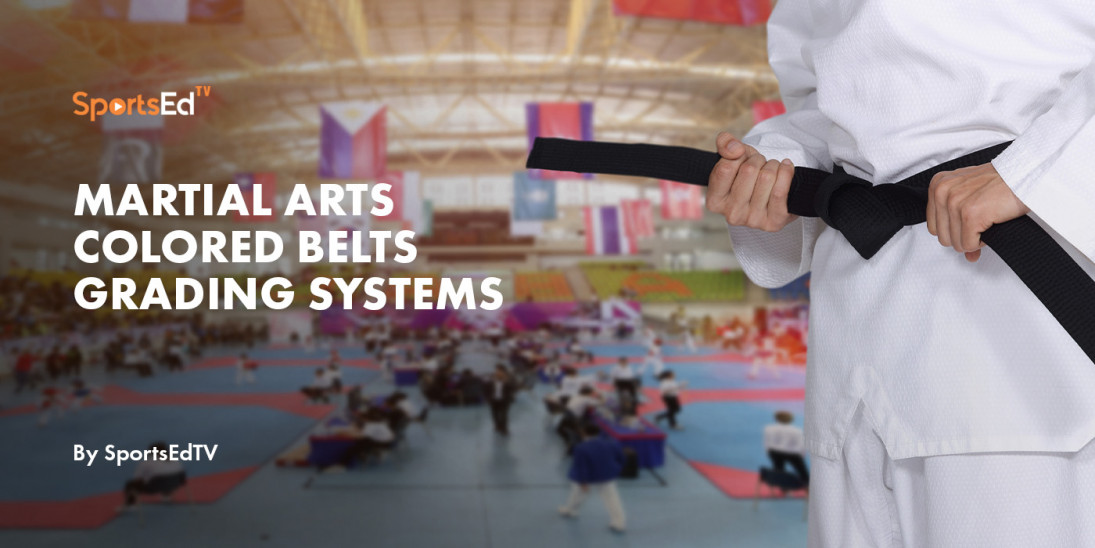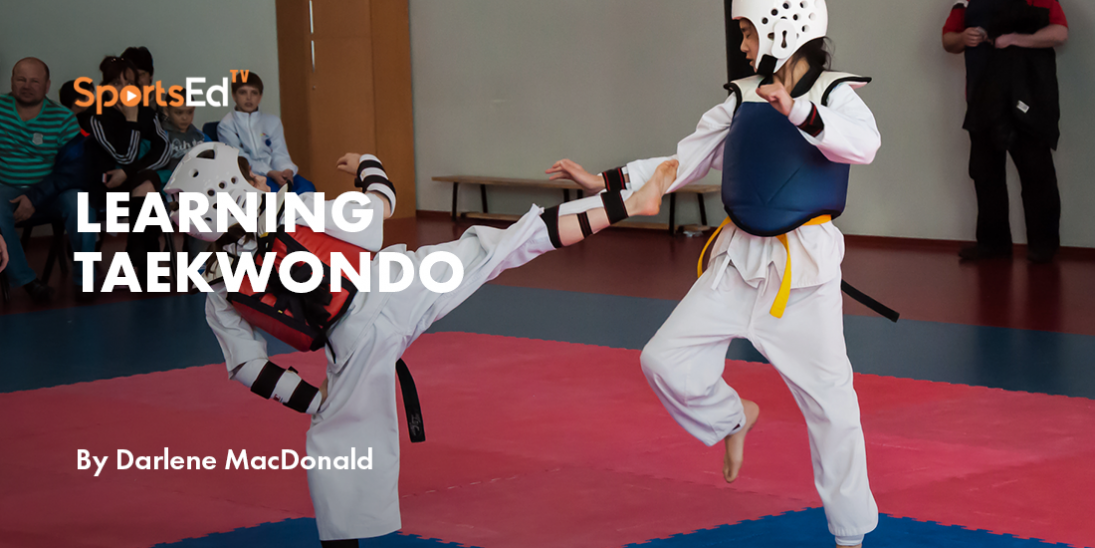Taekwondo
Welcome and thanks for visiting...

MARTIAL ARTS COLORED BELTS GRADING SYSTEMS

SportsEdTV Taekwondo is committed to bringing athletes, coaches, and parents pro-level taekwondo education videos for FREE. All levels, anywhere, anytime. Check out our full instructional library and sign up to join our taekwondo community!
To identify a rank in most martial arts the color of a belt worn during training is used. In general, the lighter the color, the closer we get to the beginning, and the darker the belt gets, the higher the rank.
To fully understand the grading system in martial arts, one must look to Japan and study to the history of martial arts, especially Judo.
Japanese martial arts were traditionally organized in schools (ryu) that passed on their know-how from generation to generation. To legitimize his knowledge, a practitioner had to show a teaching license issued by a school. This system was called "Menkyo" (license).
This system validates a level of confidence that the school grants to the student and a level of acquisition of techniques and principles.
Other popular arts had developed a scale of grades: Kyu and Dan (degree, levels). The Kyu / Dan system was used as early as the 17th century as a handicap in Go's game (30 Kyu and 9 Dan). It spread to specific arts such as floral arrangements (Ikebana), and tea ceremonies (Chado).
The Kyu / Dan system was taken over in 1883 by Jigoro Kano founder of Judo Kodokan and has since been widely adopted by modern martial arts. Kano was at the origin of pedagogical innovations such as the use of black and white belts and the Dan grade system's introduction to mark the difference in level between practitioners.
Later in the mid-1920s, colored belts were introduced into Judo in England by Professor Mikinosuke Kawaishi. These changes contributed to the motivation of students and the Judo's international recognition, which became the first martial art to enter the Olympic Games, partly in 1964 at the Tokyo Olympics and definitively in 1972 in Munich.
In Judo, we find the white, yellow, orange, green, blue, and brown belts (kyu). Next, come the Dan belts, respectively black from the 1st to the 5th Dan, red and white from the 6th to the 8th Dan, and finally red for the 9th and 10th Dan.
Belts in Taekwondo
The kyu in Taekwondo are named according to the Korean term geup (romanized gup or kup), and the functioning is quite similar to judo or other martial arts. The use of colors is not totally standardized and can vary from country to country, but generally, in adults, one starts at the 10th kup with the white belt.
The 9th kup is the yellow belt. Three kup per belt represents progression. For each additional grade, we add a bar of the color of the upper belt. As soon as we get two bars, we get a new belt for the next grade. The order of belt color is in ascending order: white, yellow, (green), blue, red and black.
 Taekwondo Dan Levels
Taekwondo Dan Levels
If the use of colored belts is not entirely standardized, on the other hand, the black belt is used everywhere from the 1st Dan. As in other martial arts, the first Dan indicates in Taekwondo the completion of a probationary period and is considered the beginning of a long apprenticeship. The first Dan is the rank of the beginner (designated in Japanese by shodan, which means, not "first", but "beginning").
What is a Dan in martial arts?
In martial arts, a total number of 10 Dans are generally considered. The tenth Dan, the highest, is usually reserved for the martial art founder and can only be awarded by him. This situation led to the suppression of the 10th grade in some martial arts such as Taekwondo. Thus, there are 9 Dan in Taekwondo, which can only be obtained after a long life dedicated to Taekwondo's development.
It is necessary to develop and possess a certain number of "virtues" such as sincerity, modesty, discretion, solidarity, and courage to acquire Dans. These are the essential elements. The technical level is secondary.
Besides, the Kukkiwon/WT taekwondo style recognizes a "poom" rank for practitioners under 15 years old: these practitioners have passed dan-level tests but will not receive a dan rank before the age of 15. At the age of 15, their poom rank automatically changes to the equivalent dan rank. In some schools, poom rank holders wear a half-red half-black belt rather than a plain black belt.
To progress from one rank to the next, students usually take promotion tests to demonstrate their competence in various aspects of the art in front of their instructor or a jury. Promotion tests vary from school to school.
They may include such items as form execution (Poomsae), which combines various techniques in specific sequences; board breaking to demonstrate the ability to use techniques with both power and control; fighting and self-defense to demonstrate practical application and control of techniques; physical fitness; and answers to questions about history, concepts and terminology to demonstrate knowledge and understanding of Taekwondo. For senior dan tests, students may be required to take a written test or submit a research paper in addition to the practical test.
Promotion from one grade to the next can be done quickly in some schools that organize group promotions every two, three, or four months. Students in the kup grade first learn the most basic techniques and then move on to more advanced techniques as they approach the first Dan. In older, more traditional schools, it often takes longer for students to pass higher-level tests than in newer, more contemporary schools.
The transition from one Dan to another can take years. Some styles impose age or time limits on graduation for dan promotions, like the number of years between one dan promotion and the next.
In 2000, Taekwondo appeared in the Summer Olympic Games' official program organized in Sydney (Australia). Since then, Taekwondo has strongly developed as a sport where martial arts ranks and rules have become less critical. Athletes train and develop techniques aimed at winning matches. These can differ significantly from the methods used in martial art. In the World Taekwondo system, an athlete must have a Dan to compete in continental and world championships. In practice, Taekwondo today has two trends, one sport-oriented, the other focused on the martial art.





